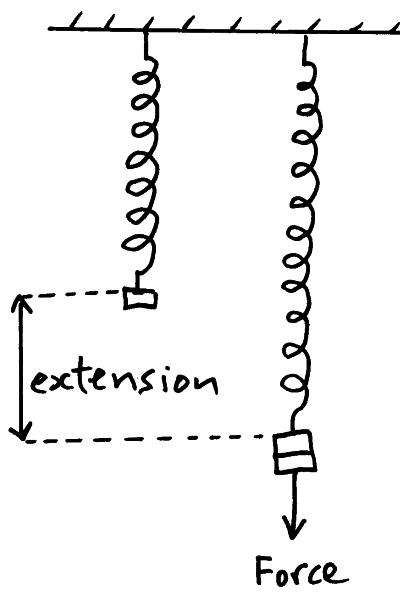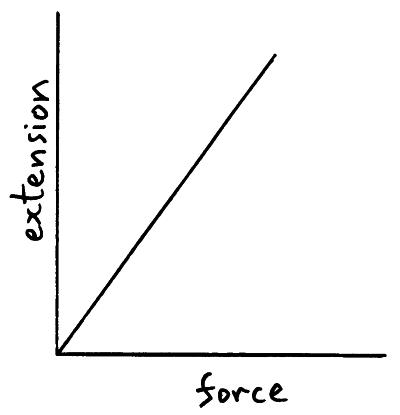Introduction
Scientific inquiry is a method that involves investigating a phenomenon to acquire knowledge and integrating that knowledge with the previous one. It’s a hand on activity that involves collecting of reliable and measurable evidence based on the topic of study. Scientific inquiry involves the following steps:
- Problem identification, this is where the teacher and student identify the problem in class.
- Formulation of hypothesis, teacher and student try to make some suggestions about scientific experiment on what they are expected to achieve.
- Collection of the necessary apparatus required to carry out the experiment.
- Designing of the method to use.
- Carrying out the experiment.
- Collection of data and recording.
- Analyzing the data and making of conclusion (Doris, 1991, p. 194).
Once the scientific method is conducted the student can use the acquired knowledge to solve problems and apply the knowledge in a different incident (Hall, 1998). Hence, scientific inquiry plays an important role in information processing to a student. In additional to the above, scientific Inquiry aims at reducing bias interpretation and documentary of result for future verification.
Task
The discussion point of this section is the flexibility of spring constant due to addition of weight. The elasticity will help in understanding more on Hooke’s law and its application. Measurement of gravity and the coefficient of static friction using a spring balance are two experiments that relates to this experiments. In both cases spiral spring and mass are used, this shows that the knowledge of elasticity of a spring is important in tackling other scientific inquiry. Experimental design is an information gathering process where variables are identified. Any experimental design aims at investigating a scientific phenomenon that occurs in nature through manipulation of specific variables. It involves observation, measurement and organizing the experiment properly to ensure that the right data is collected to solve the problem at hand (William, 2006). To improve precision of the answer, we must ensure that the questions to solve are clearly identified.
There are three types of variables in a scientific inquiry which include: dependent, independent and uncontrolled variables. A dependent variable is an experimental measurement that is affected by an independent variable. It is also known as respondent variable since it is caused by the treatment of the experiment. Independent variables are changes caused by the experimenter while controlled variable are those that experimenter want them to remain constant and can as well influence dependent variables (Hall, 1998). Threat of internal validity result after existence of extraneous variables which include: instrument, maturation, testing, selection, regression, subject attrition, history and research mortality. This extraneous variables influence the relationship of independent variables and dependent variables. An experimenter has no control over them and can lead to errors in the results made (Doris, 1991, pp. 194). Hypothesis is a proposed assertion of a phenomenon that can be proven either right or wrong through experiment (Hall, 1998).
Project design
The following experimental design was provided to carry out the experiment on elasticity of a spiral spring.

In this experiment of elasticity of a spring constant the above design was prepared; it was chosen since it simple and the student are in a position to arrange the apparatus as shown. The following apparatus used were in this experiment: tall stand and clamp, meter rule, weights, scale pan and a light spiral springs. The tall stand and the clamp are used to hold the spring at a suitable height; meter rule is to be used on measuring the extension, weights are used as mass, scale pan will be used on holding the mass while the spring will lead to extension once the weight are added.
Procedure
- Set the apparatus as shown in figure1 above.
- Take the reading of the spring without any weights; this is indicated on the spring and a meter rule is used to measure the length.
- Add suitable weights on the scale pan-pan and note the reading each time, repeat this for several weights.
- Record your finding on the table below
Table 1 on observation
Weight of the scale pan is taken in Newton’s (N) which are the fundamental unit of force; the scale reading is taken in meter (m) the fundamental length. Tension is the force that occurs after stretching the spring balance due to the effect of weight on the scale pan and is accelerated by gravity
In this scientific inquiry force is taken as the independent variable since it the one manipulated by the experimenter. As student adds more mass on the scale pan, force is to be exerted thus leading to extension of the spring. Extension of the spring due to weight is taken as dependent variable; extension depends on the mass. If more force is exerted on the scale pan it will result to increase in extension which may later affect the elasticity limits. On the other hand, the spiral spring and meter rule are taken as controlled variables, these apparatus must remain constant in the experiment to affect the dependent variables. Internal validity threats in this experiment results from the calibration of the meter ruler and the working of the spring.
As the teacher you must ensure that the rulers are well calibrated, the spring balances are working appropriately to avoid errors in the experiment (Hall, 1998). The hypothesis in this section is to determine the elasticity of a spring constant and it’s determined by carrying out the experiment on elasticity (William, 2006). To come up with the correct hypothesis one must consider the question at hand and work on it, in our case our main problem understand the elasticity of a spring.
Data collection
The table below shows the record taken after the experiment of elasticity; the data collection was taken through measurement of weights in the spring balance and the extension of the spring in the meter rule.
Table 2 records of the observation made.
From the above table, it shows that the scale reading was at 0.50m before the placement of weight of the scale pan that weighs 2g. When a mass of 10g was added the scale reading changed to 0.55m implying that the added weight lead to the extension of the spring by 0.05m. This process repeats for several weights that will be added on the scale pan. The above scientific inquiry obeys Hooke’s law hence the phenomenon has been proved as being collect.
Data representation

After analyzing the data the above graph of force verse extension was drawn, it show that when a force of 10N is added on the scale pan an extension of 0.05m is exerted. The result clearly indicates that the force is directly proportion to the extension provided the elasticity limit is not exceeded. This is clearly shown on the line graph above since after a force of 10N is added an extension of 0.05m result which produce a constant graph. Mathematically this can be represented as follows
Force (N) = spring constant (N/M) * extension (M)
The spring constant is normally provided which is always the same in all elastic spiral spring; in this case our force can be taken as 10N and the extension as 0.05m.
Conclusion
In conclusion the above experiment confirmed the formulated hypothesis; the main aim of the experiment was to determine the elasticity of a spring constant in a spiral spring. It has clearly observed that once a mass is added on the scale pan an extension occurred on the spring. As the results indicated, the rate of extension of the spring was in proportionate to the mass of the weights added but this was limited on the point in which the elastic limit of the spring was reached. Further increase in weight past the elastic limit did not result in a proportionate increase in the extension of the spring. This is in agreement with the Hooke’s law.
These indicate that the experiment was correctly carried out and the correct phenomenon was proven right. Experimental design enables a student to understand the scientific ideas and process through manipulation of apparatus (William, 2006). This is due to the fact that a student is able to gather data through hands on activity. Through experimental design a student is in a position to explain a phenomenon and draw a conclusion from data collected. In this case, the student is able to understand the concept of elasticity and Hooke’s law through manipulation of force and extension. This indicates that experimental design assist a student to solve problem encountered in class, acquire knowledge and integrate that knowledge in new area. In our case a student who has carried out the experiment correctly will be able solve on elasticity, relate that knowledge on areas like; measurement of gravity and on coefficient of weight using a spiral spring (Doris, 1991, p. 194).
The experiment on elasticity of a spring constant is easy to replicate due to the fact that: the problem is clearly indicated and hence another person will be in a position to identify it. The hypotheses of the experiment are well formulated, apparatus are properly indicated and the method to follow is systematically elaborated. Any person willing to repeat the same experiment will not experience any difficulties. Replication of experiment can be used to evaluate the validity of the experiments for instance: as a teacher you stand a position to verify whether different result collected by various group in class as being right or wrong. It also enables one to get a more accurate result in your problem and achieving the set goal in an experiment. On the other hand replication helps in making a precise decision that result to an absolute conclusion. Through replication of experiment the student will be in a position to understand it better and make realistic conclusion. On the above experiment replication will assist the learner identify the problem and be in a position to solve (Doris, 1991, p. 194).
References
Ellen, Doris. (1991). Doing What Scientists Do: Children Learn to Investigate Their World. Heinemann, pp.194
Hall, Jody S. Et al. (1998). Organizing Wonder: marking Inquiry Work in the Elementary School. Heinemann.
William, K. M. (2006). Research Methods Knowledge Based: Experimental design. USA: Cincinnati.